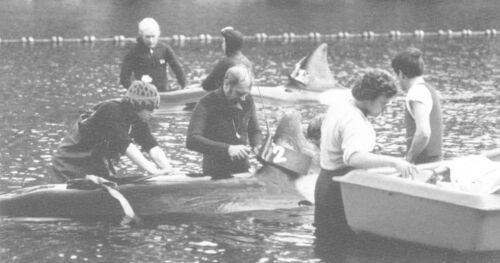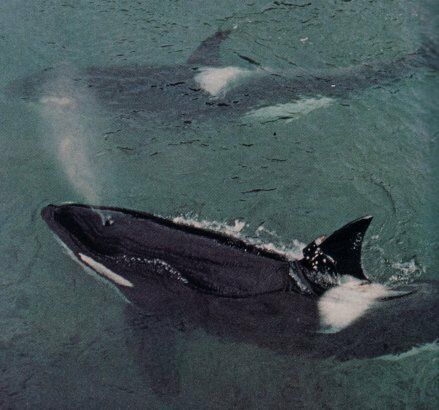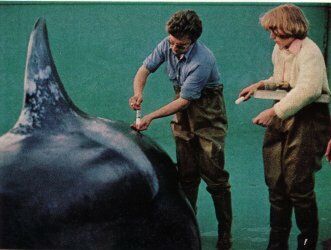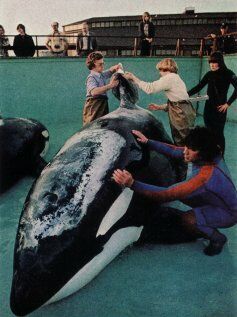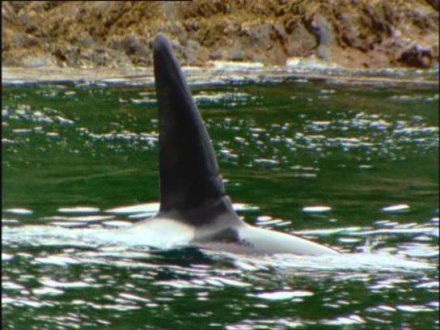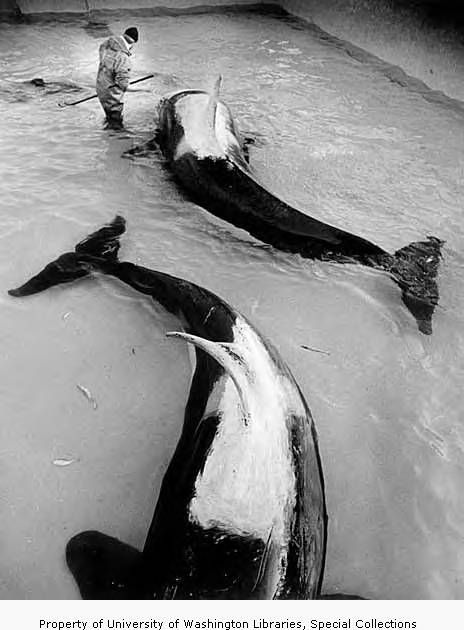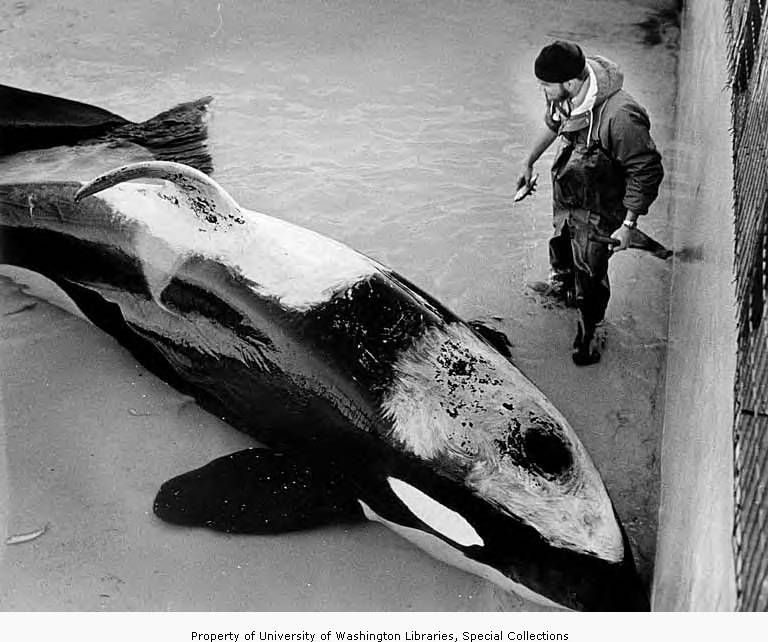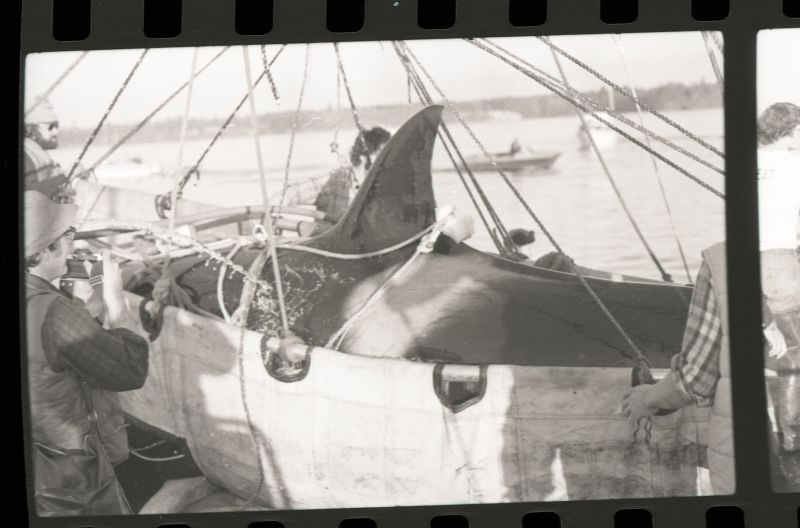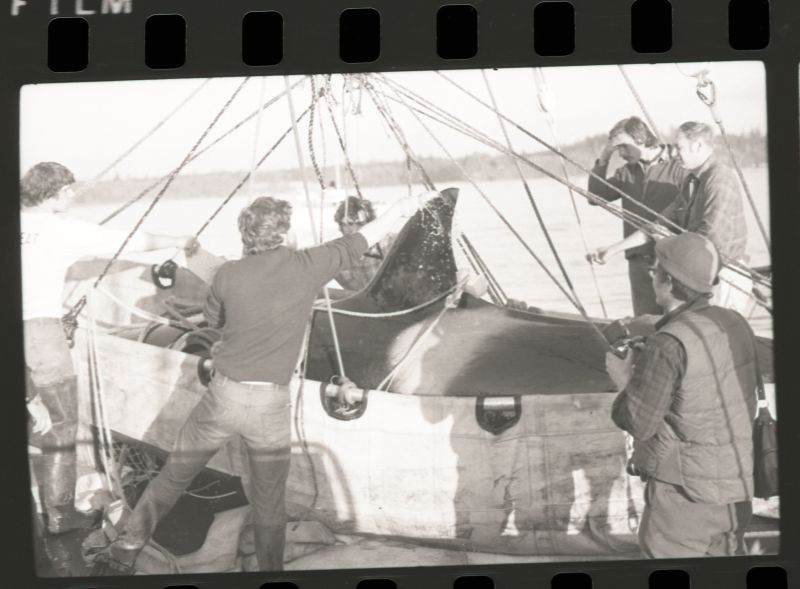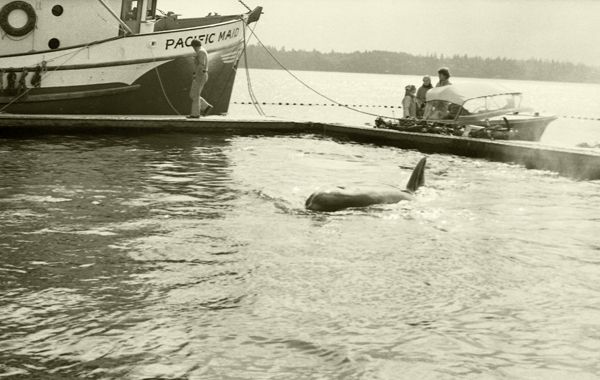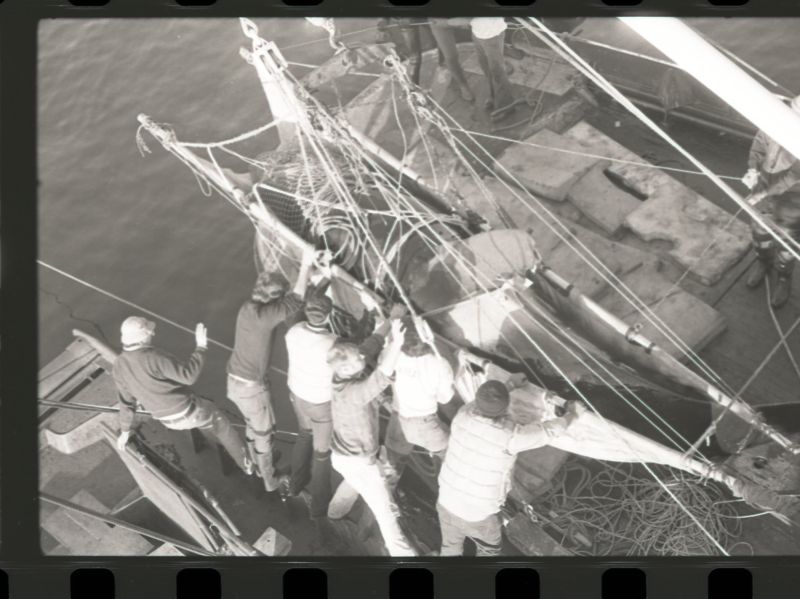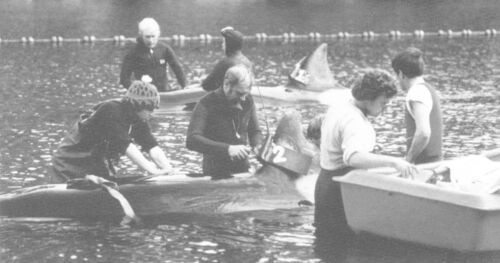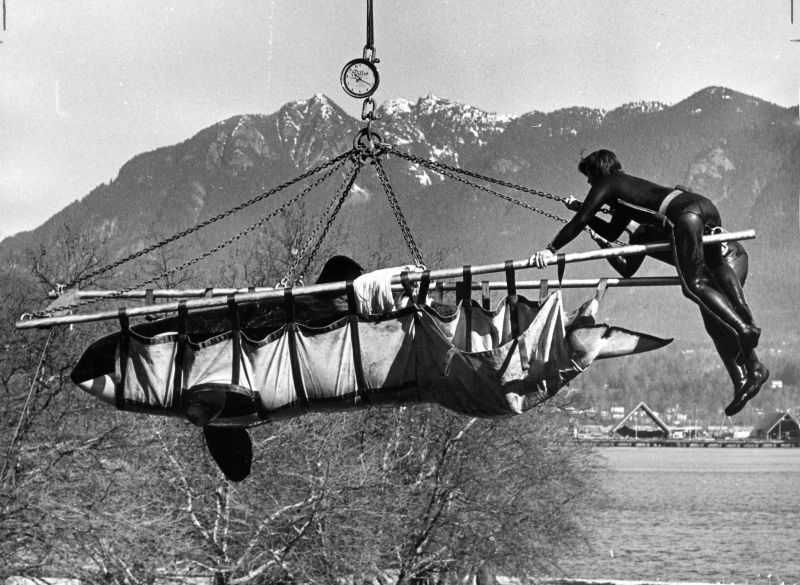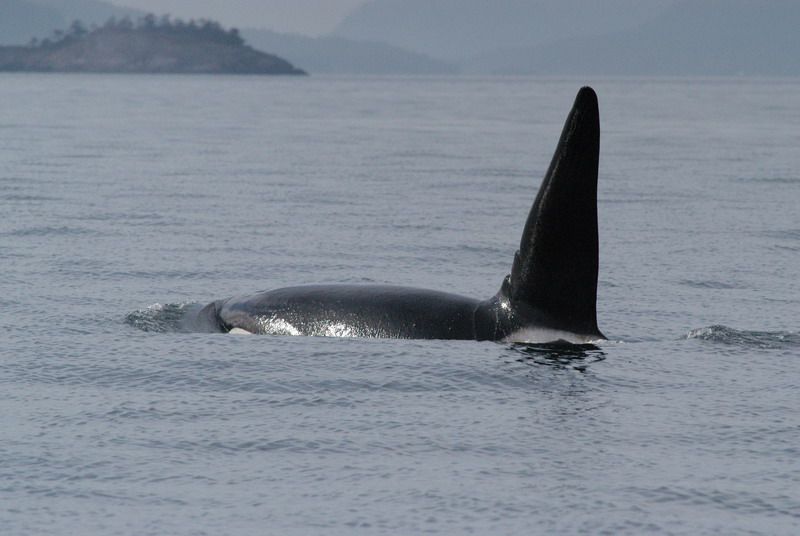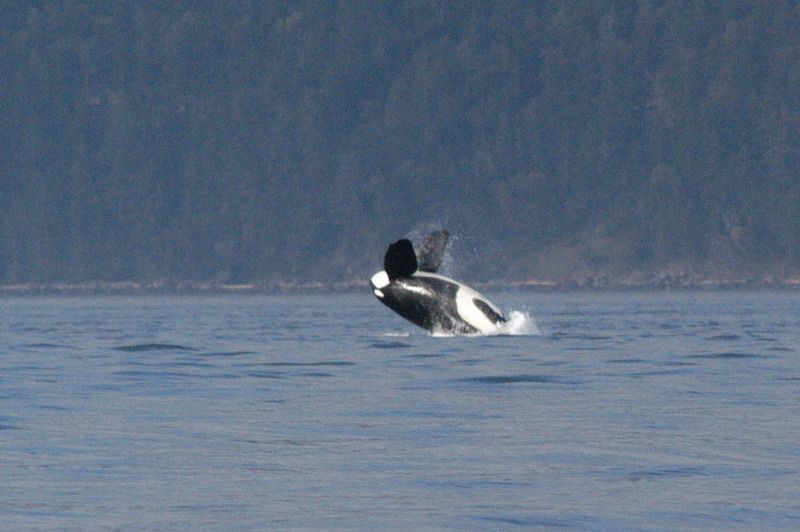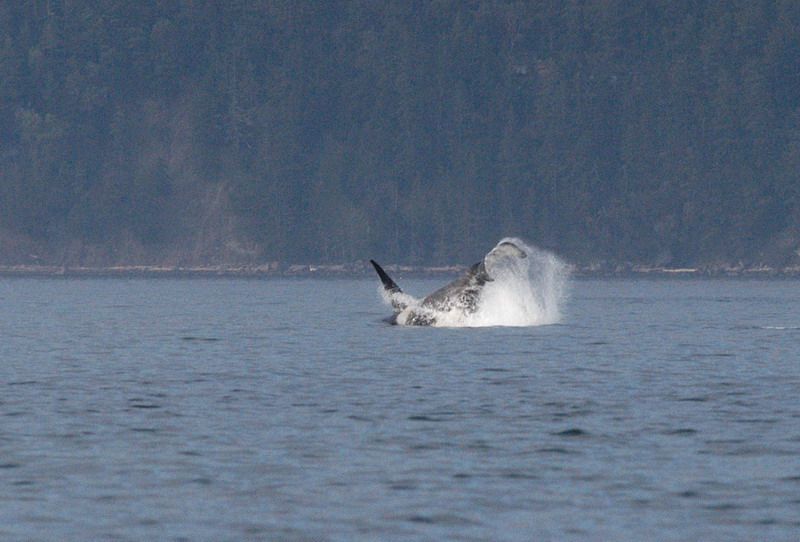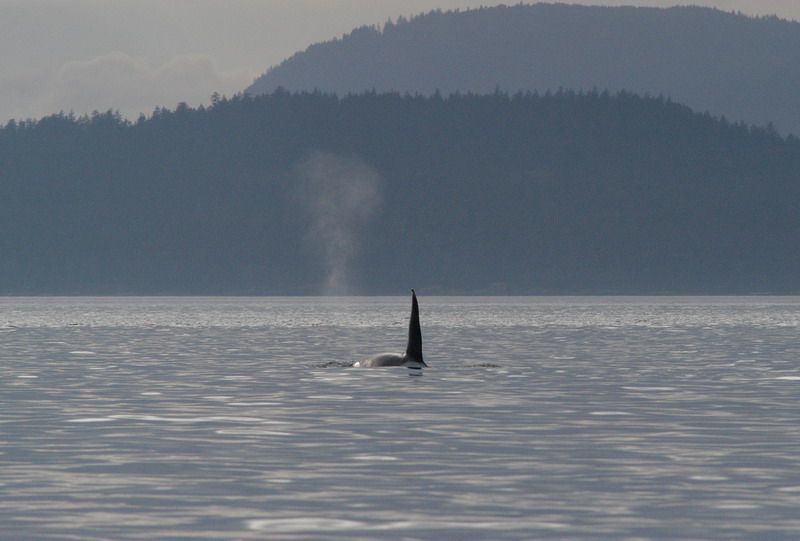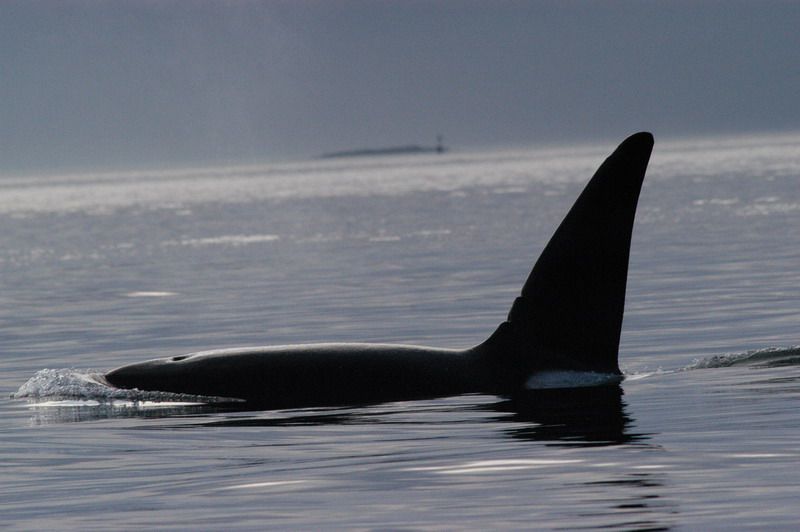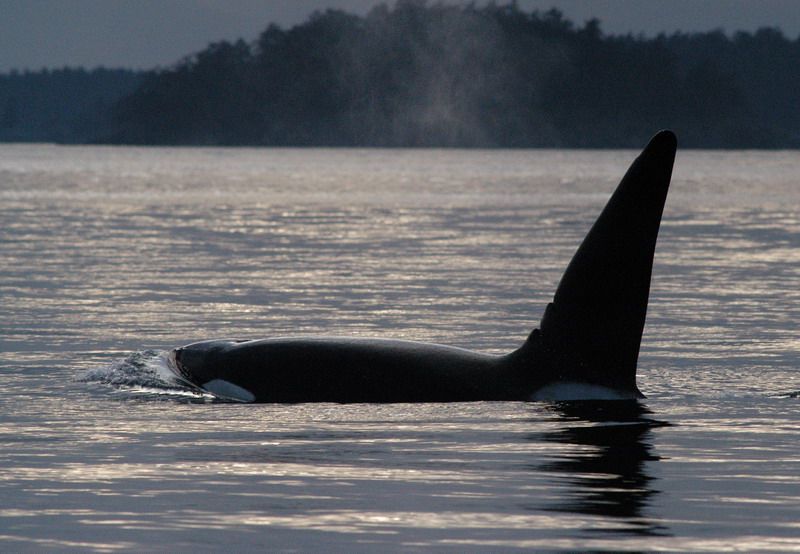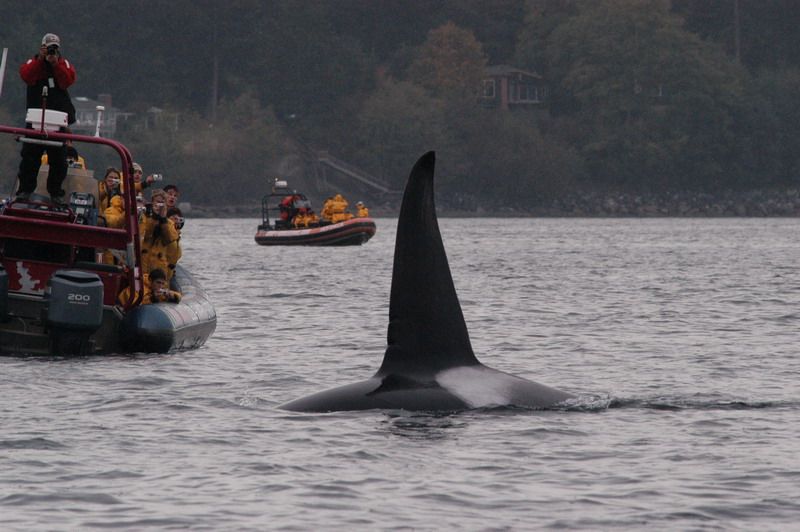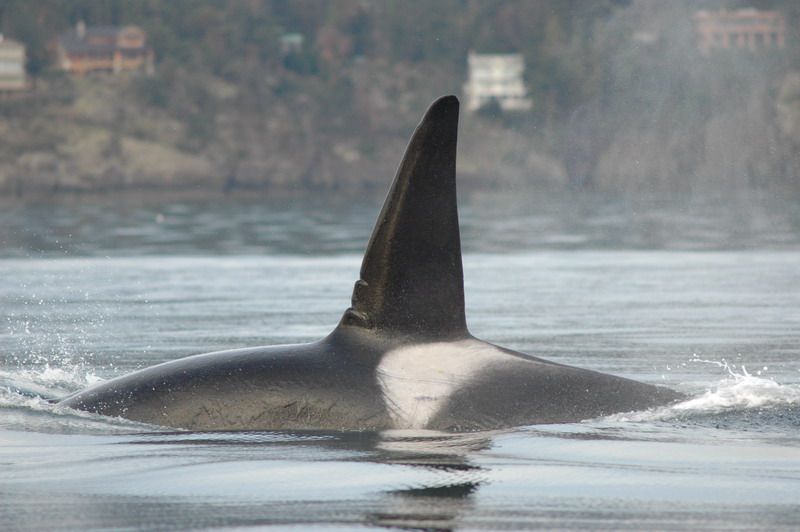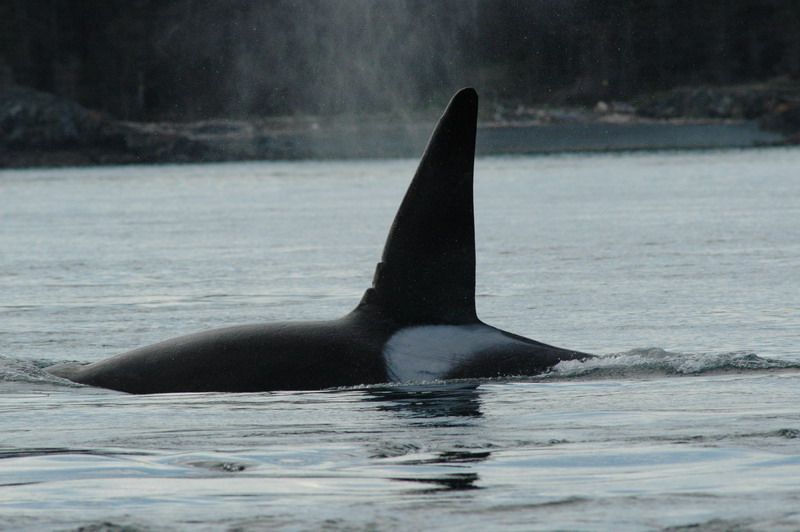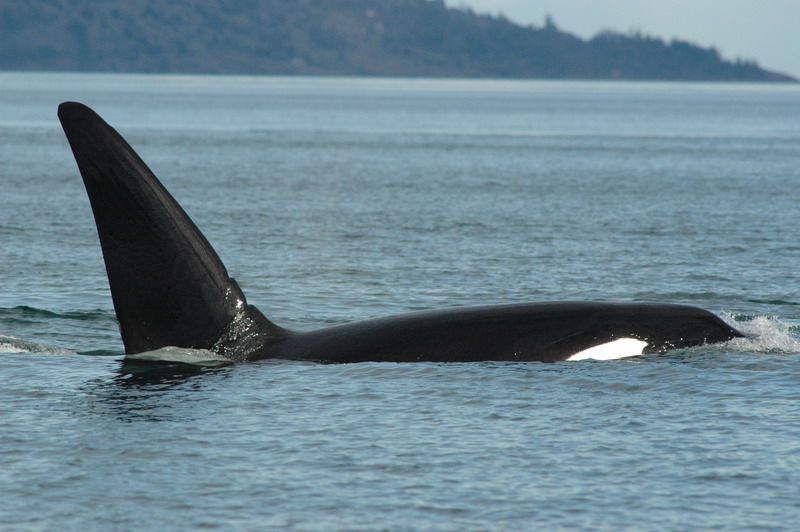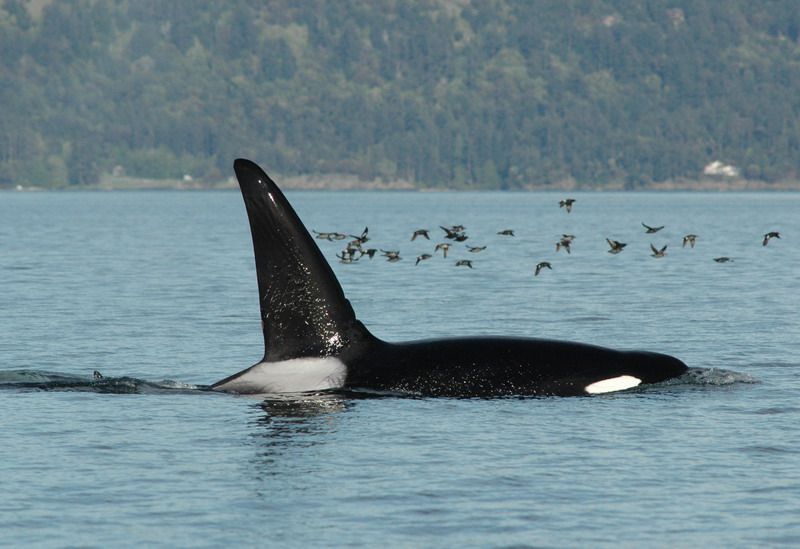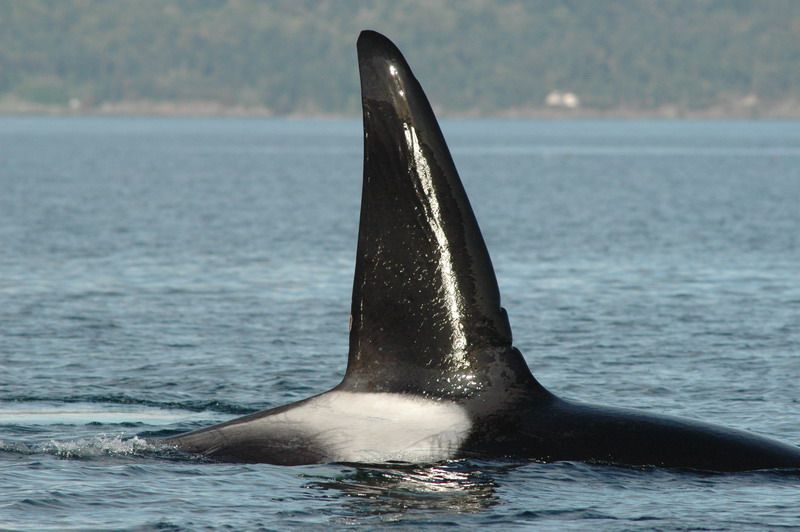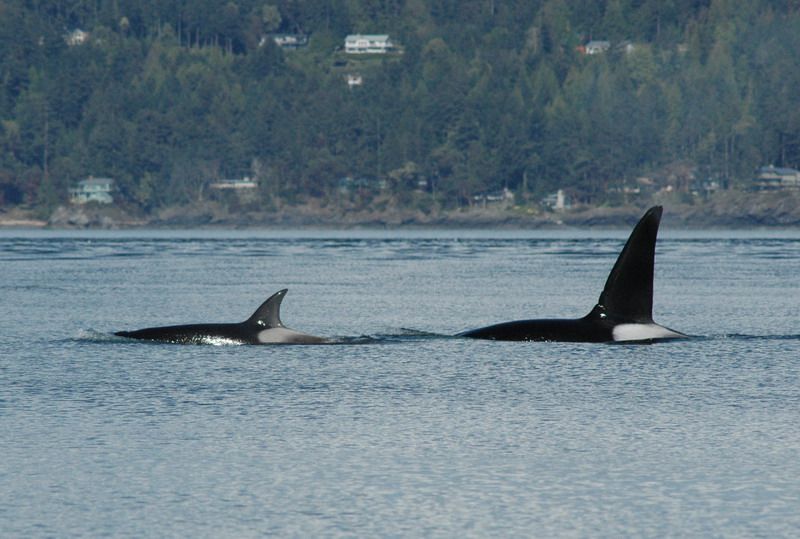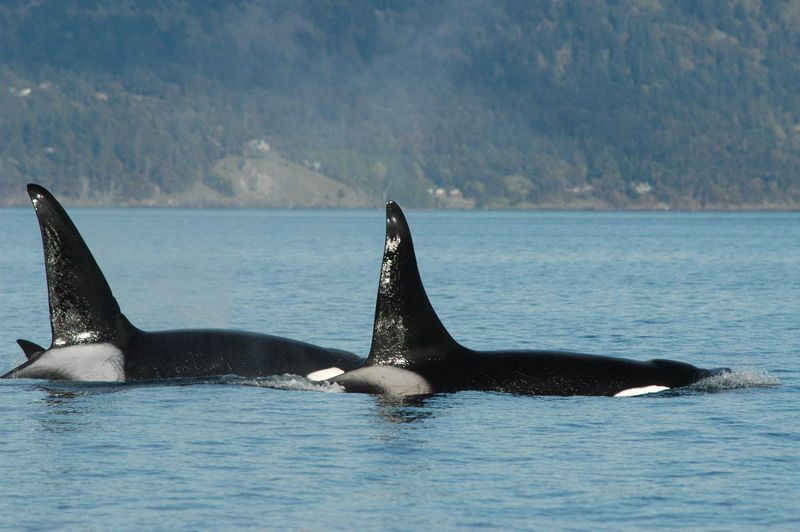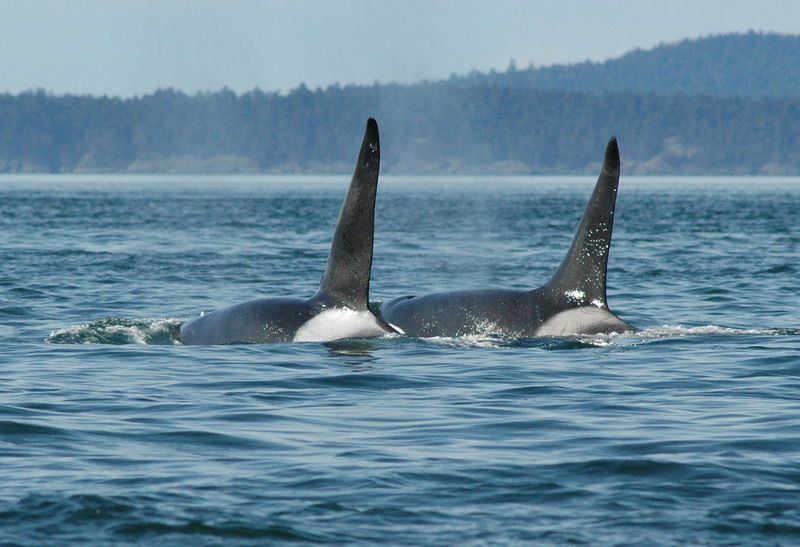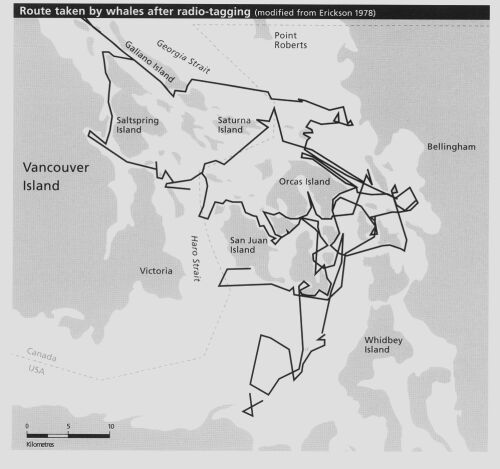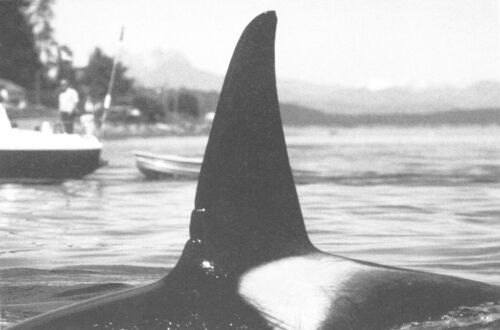O4,
with the new naming system for transient orcas scientifically designated now as T14, is quite likely the son of O5, now referred to as T13. They have not been seen apart since first identified in 1975.
In March 1976, they were captured together with four other transients at Budd Inlet near the head of Puget Sound, Washington, as part of a live-capture operation to supply whales to aquaria. The capture operation involving water bombs and high-speed boats took place right in front of the Washington State legislature, where the issue of further live-captures was being discussed. Due to public outcry at the time of the capture, all the whales were eventually released, but O4 and O5 were held for several weeks longer than the others for scientific reasons. But after that incident no more commercial live-captures took place in the Pacific Northwest.

|
|
O4's characteristic dorsal fin with the scars still visible
|
O4 and O5 were transferred to the Seattle Aquarium, where researchers with the University of Washington designed "radio-packs" to carry VHF tags for tracking each whale after release. These backpacks were fitted to the leading edge of the dorsal fin of the whale and held in place by five stainless-steel surgical pins, each 4 millimetres in diameter. Each pin was bored through the fin and fitted with corrosive nuts, so that the radio-pack would fall off in about a year. The radio-tags weighed about 1.5 kilograms each and were designed to transmit for several months and be receivable at ranges of up to 5 nautical miles from boat, or 18 miles from aircraft.

|
|
O5's characteristic dorsal fin with the scars still visible
|
In preparation for release, O4 and O5 were moved from Seattle to a small bay on San Juan Island. They were finally released with radios operating in late April 1976, about seven weeks after capture. The whales were then tracked almost continuously by boat for the next 10 days, after which the signals were lost due to radio interference. The radio signals were picked up periodically over the next five months, then the whales disappeared. When the whales were next encountered three years later, they had lost their radio packs, but the surgical pins remaining in the fins had caused a build-up of scar tissue that was clearly visible, especially in O5. It might have been a result of the whales' attempt to remove the devices. Fortunately, these wounds have healed, and the whales have otherwise shown no ill effects of the rather invasive tagging procedure.
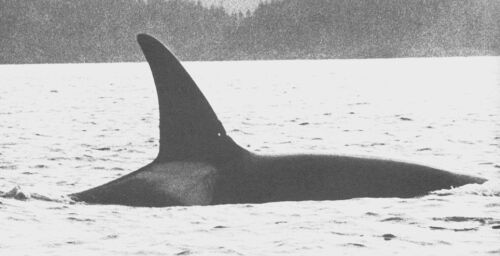
|
|
O4 as a subadult in the late 70's or early 80's
|
Over the 10 days of continuous tracking, the radio tags provided considerable data on the dive times and speed of travel. O4 and O5 travelled an average of 68 nautical miles per day, at an average speed of 2.8 knots. They reached a maximum speed of 16 knots on occasion, but this was not sustained for long. Three or four short dives as the whales breathed averaged 21 seconds in duration, and these were followed by longer dives averaging 5.77 minutes. The longest dive recorded was 17 minutes.
Although this information is interesting, it could have easily been collected through standard observation techniques. Today, modern data loggers and satellite tags can provide far more useful data on dive depths, underwater swimming speed, the location of whales over a wide range, and so on. Tags can be attached for a few hours using suction cups, but a non-invasive technique has yet to be developed that would allow reliable attachment for long-term satellite tracking of killer whales.
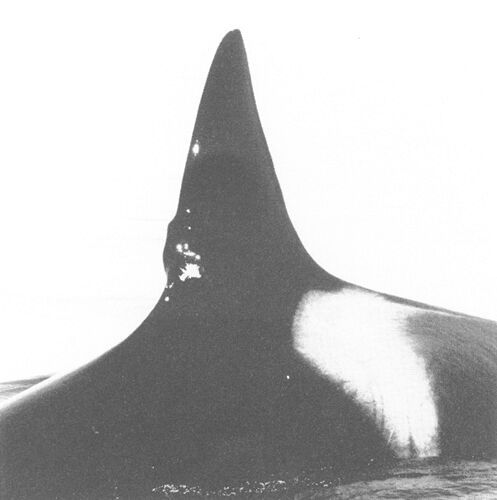
|
|
O5 cruising
|
During the past decades, O4 (which is known as Pender with the B.C. Killer Whale Adoption Program) and O5 (her adoption name is Flores) have been encountered almost every year. Although preferring the waters around southern Vancouver Island, the pair has also been sighted once in southeastern Alaska. O5 has been seen last in 1998 and is presumed dead. But O4 is still around regularly. He was born around 1964 and is quite old for a transient killer whale. Especially when you consider the high amount of PCBs that transient males accumulate over the years. In general males have higher PCB levels than females, because females dump them off to their offspring. And marine-mammal feeding killer whales have higher levels than fish predators, because they are at one higher trophic level on the food chain. That means that their prey is already higher contaminated. PCBs are affecting both immune system and reproductivity.
![]()
